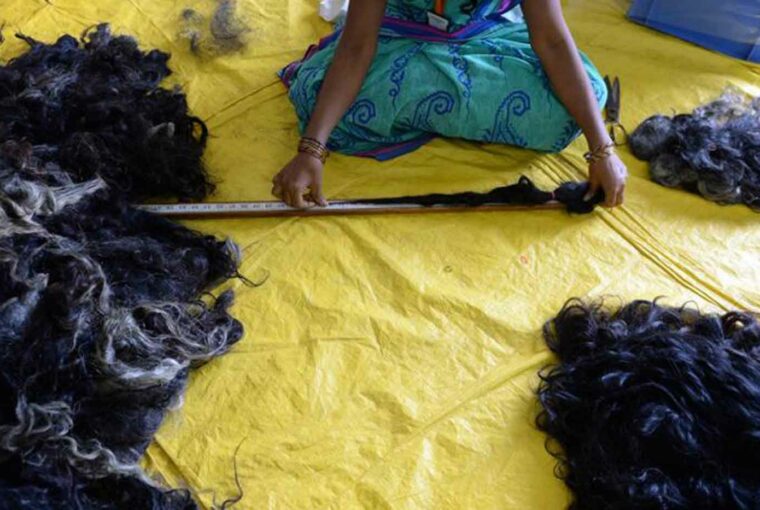16 Aug 2023
Hair processing is a major industry in India with places like Chennai, New Delhi, Elur in Andhra Pradesh, Murshidabad in West Bengal, and Dig in Rajasthan as the major centres for this job. This Rs. 3,000-crore business takes clumps of hair left behind by customers after a haircut or at temples and processes them into wigs for follically challenged people.
A small town in Karnataka, Bhagyanagar is a major hub for this business, with 40% of the hair processed in India, coming from here. This town is situated 380km from Bengaluru, in the Koppal district of Karnataka.
Until independence, families working in farms took up this business, but when their land was acquired for the Tungabhadra dam, these people resettled in Bhagyanagar, where they were taught the art of hair processing. What started as a small venture of only 5-6 units operated from the houses of locals, grew into a full-fledged business. Today, there are more than 200 hair processing units with 6,000-8,000 people working in it. Some more units have come up in nearby areas of Koppal city, Kinnal, Hiresindhogi, Alavandi, amongst others.
The hair processed in these units are sent to Africa, Myanmar, and China, where they are turned into wigs and hair extensions, which are further transported to America and Europe. People prefer hair from India as the locals have good-quality hair. There is a lot of demand for them in Africa and China. In fact, in ancient Rome, people paid a lot to get wigs made from black Indian hair.
However, the journey from collecting hair to making wigs is a long one, which starts with collecting raw hair from salons. After that, the hair is sold to processing units and the hair pickers are paid in kind in the form of combs, hairpins, utensils and the like. Parasappa Vaddar buys raw hair amounting to 50-60 kg every month from street-level hair pickers and sells it to the processing units for Rs 2,000-2,500 per kg for white hair and more than double the amount for black hair. The temple trust hair gets more than Rs. 25,000 per kg as it is of better quality and is shaved and not trimmed.
The laborious process of hair processing has many stages, starting with cleaning and washing the hair, which is then dried and sorted as per length and thickness. They are then made into packages of varied weights and sold. On an average, a worker takes a day to process half to one kilo of hair.







